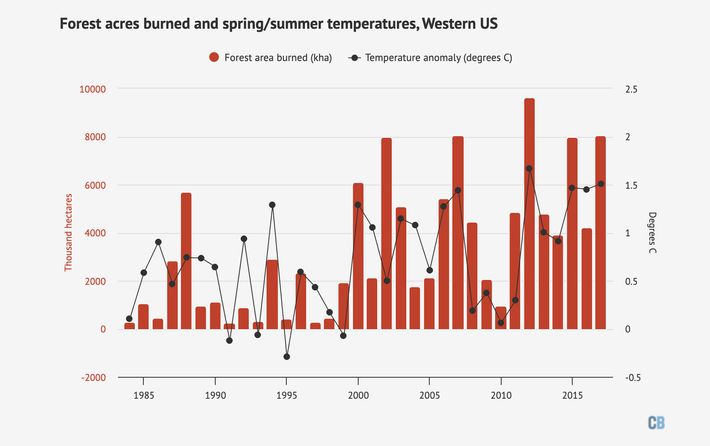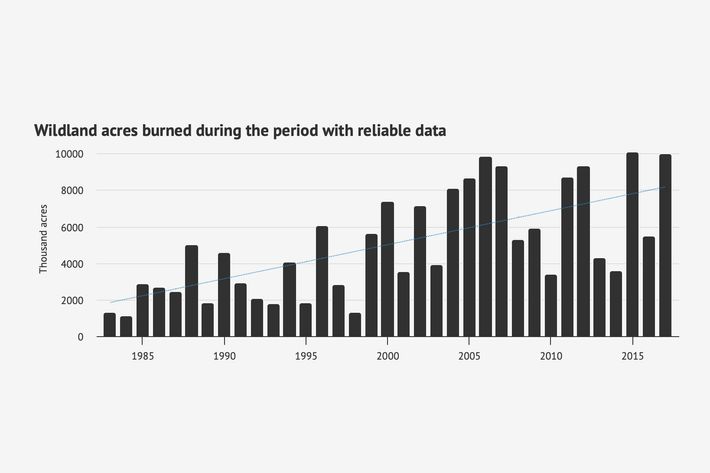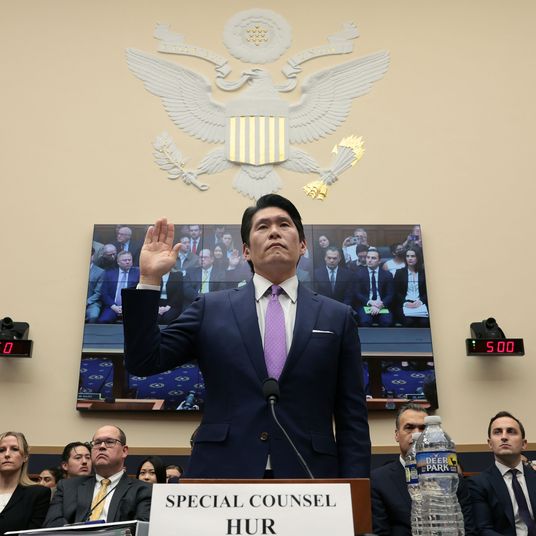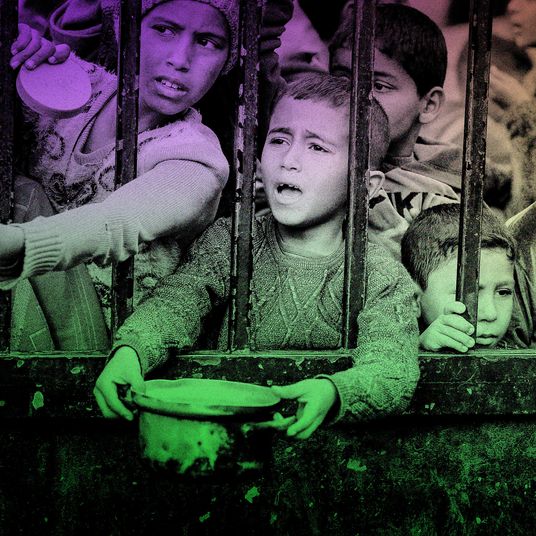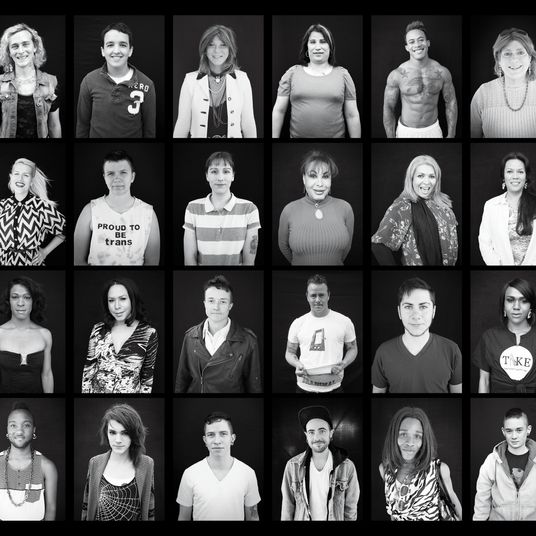As I write this, the view outside my window is sepia-toned. There’s an ashen, orange haze where Manhattan’s sun and skyline should be. Particulates in my throat and lungs are sparking nostalgic reminiscences for the time I passed out from an asthma attack at youth soccer. To go outside is to enjoy all the respiratory benefits of chain-smoking without the pesky side effects of looking cool or feeling good.
I’m told this is how my friends on the West Coast live for weeks most every year. But the worst wildfire season in Canada’s history has given the northeast’s major population centers a taste of the proto-apocalyptic nightmare that Californians call “autumn.”
For many Americans, the past 48 hours of abysmal air have constituted a uniquely visceral reminder of climate change’s perils. And yet, as the economist Marshall Burke tells Heatmap News, many of the most prominent estimates of the economic costs of climate change fail to account for wildfires at all. Which is unfortunate, since climate change is unquestionably increasing the severity and frequency of wildfires, and the costs of such conflagrations are profound.
Climate change has made summers hotter and drier worldwide, reducing soil moisture and desiccating vegetation. This turns forests and grasslands into better tinder than they ordinarily would be during fire seasons, while also extending the length of such seasons.
The strong correlation between higher temperatures and worse fire seasons is well-illustrated by this graphic from climate news outlet Carbon Brief:
Thus, as temperatures rose between 1983 and 2017, the number of U.S. wildland acres burned annually by wildfires more than doubled.
The consequences have been especially stark in California, where all 15 of the largest recorded fires in state history have occurred in the past two decades. Six of the seven largest, meanwhile, have taken place since 2020.
What happens in California or Alberta does not stay there. As this week’s scenes in New York City so vividly illustrate, wildfire smoke strays far from its places of origin. David Wallace-Wells notes that the number of Americans who’ve been exposed to “extreme smoke days” has grown 27-fold over the past ten years, while exposure to the most extreme smoke events has swelled by 11,000-fold. And this eye-singeing rise has not been concentrated in the west: A 2021 study found that wildfire smoke actually harms the health of more people living east of the Rockies than west of them, due to the fact that (1) even indirect, comparatively low levels of exposure to wildfire smoke is deleterious to one’s health, and (2) a lot more people live in the east than in the west.
The economic cost of this surge of wildfires is exorbitant. It includes, of course, a fire’s direct impacts on health and property. The 2018 Camp fire in Northern California generated $12.5 billion in losses covered by insurers. But as we just noted, wildfires also impair human health on a grand scale, while degrading ecosystems, interrupting economic activity, and yielding considerable fiscal costs for prevention and recovery. A 2017 report from the National Institute for Standards and Technology found that “the annualized economic burden from wildfire is estimated to be between $71.1 billion to $347.8 billion,” and America’s wildfire problems have only grown more severe since then.
The economic costs of wildfire smoke alone are vast, and often undercounted. Particulate pollution has proven to be far more harmful than even environmentalists appreciated when the Clean Air Act was passed. Public-health researchers estimate that air pollution kills 10 million people each year, while degrading the lives of far more by contributing to higher rates of cognitive decline, mental illness, suicide, Alzheimer’s, Parkinson’s, cancer, premature birth, and low birth weight.
The research documenting these harms is typically based on examining the health implications of fossil-fuel pollutants. But there is some reason to think that the particulate matter generated by wildfires is even more harmful to our health than that which comes out of a car’s exhaust pipe. A 2021 study from the Scripps Institution of Oceanography at the University of California, San Diego found that wildfire smoke is up to ten times more deleterious to humans than the automotive variety. This is intuitive when one considers all the materials that can potentially burn during an out-of-control conflagration. When a wildfire takes out a neighborhood, all the chemicals at the back of each house’s garage or under its sink become aerosolized.
Over the past half-century, thanks to the Clean Air Act, air pollution in the United States has declined drastically. But wildfires have rapidly eroded those gains in the west, and now threaten to do the same in the east. In the former region, wildfires now account for up to half of all air pollution. Which is to say that, due to wildfires, Americans in the west are effectively getting twice as much air pollution as their current industrial economy would otherwise require.
Critically, the economic consequences of wildfire smoke extend beyond their direct medical impacts, as people lose time, money, and quality of life to preparing for heavy smoke days, mitigating their effects, canceling plans, and accommodating their impaired health. And yet, many conventional estimates of the economic impacts of wildfires fail to account for these indirect costs, focusing instead on merely the direct “cost of illness.” A 2010 paper from the U.S. Geological Survey, U.S. Forest Service, and Colorado State University found that this led regulators to underestimate the economic costs of wildfire smoke by nearly nine times.
All this said, it is absolutely true that climate change is not the only driver of the growing frequency and intensity of wildfires. Beginning in the early 20th century, U.S. policymakers attempted to suppress all forest fires including natural wildfires, which serve to periodically clear surface-level vegetation. As Patrick Brown of the Breakthrough Institute notes, before the U.S. settlement of the west, much of the region’s pine and mixed-conifer forests experienced fires once every decade. Today, many haven’t burned in a century. This has led surface-level vegetation to build up to unnaturally high levels, which increases forests’ vulnerability to severe wildfires in multiple ways. For one, by increasing competition for water, excessively dense vegetation renders forests more vulnerable to drought. For another, it provides more fuel for fires once they are sparked.
Decarbonization is not going to make the climate less conducive to wildfires than it is today. It will only limit how much hotter — and thus wildfire prone — the climate becomes. So, any agenda for reducing the existing harms of wildfires will need to focus on adaptation and mitigation. We need to conduct more controlled burns and thinning in vulnerable forests to limit the severity of wildfires. And we need to allow for housing construction in urban areas that are relatively insulated from the direct impacts of wildfires, so that development does not continue sprawling out toward areas exceptionally vulnerable to conflagrations. Since 1990, more than 60 percent of new housing developments in California have been located in areas prone to wildfires.
Nevertheless, the more we can contain global temperature increases, the fewer days we’ll lose to menacing orange hazes or the illnesses that they cause and exacerbate. The notion that there is a sharp tradeoff between economic prosperity and ecological sustainability is patently misguided. As this week’s costly blazes make clear, few will feel prosperous in a world on fire.
Related
- The Wildfire Haze Is Coming Back to New York
- Canada Is on Fire. America Is Choking on Smoke. Is This the ‘New Abnormal’?
- Photos: Smoke Grinds City to a Halt With Relief in Sight


